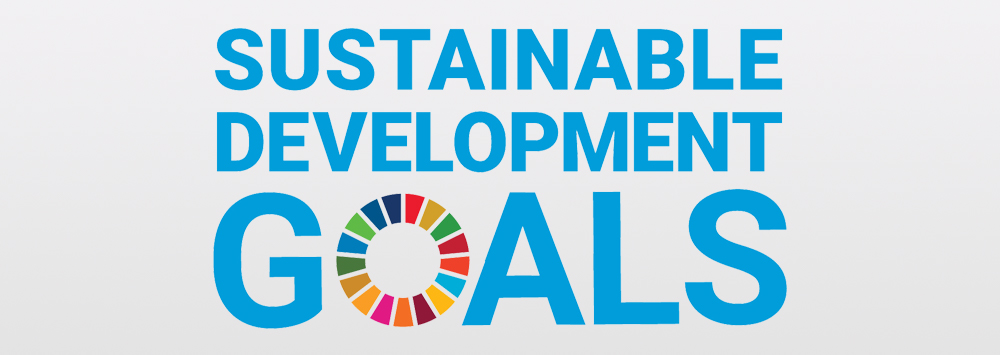Overview
The aim of the United Nation’s 17 Sustainable Development Goals (SDGs) is to secure a sustainable, peaceful, prosperous and equitable life on earth for everyone now, and in the future. The goals cover global challenges that are crucial for the survival of humanity. Education is emphasised as a critical enabling activity in achieving the goals:
"To create a more sustainable world and to engage with sustainability-related issues as described in the SDGs, individuals must become sustainability change-makers. They require the knowledge, skills, values and attitudes that empower them to contribute to sustainable development. Education, therefore, is crucial for the achievement of sustainable development.”
(UNESCO, 2017 p7)
In January 2020 the University committed to incorporating the SDGs into all its activities and decisions through the signing of an SDG Accord (The University of Liverpool, 2020a).
Benefits
- An important international context for introducing students to social, economic and environmental sustainability issues into the curriculum (UNESCO,2017).
- Many students view Universities as having an important role in achieving the SDGs and value their incorporation into learning and teaching (NUS, 2018).
- Can act as a stimulus for developing engaging and transformative learning and teaching through education for sustainable development that typically engages students in real-world complex problems (The University of Liverpool, 2020b).
- Provides opportunities to incorporate into the curriculum the impact of sustainability related research, local and global sustainable development projects.
- Supports the development of student employability skills and fulfilling career choices.
Putting it into practice
- If you are not familiar with the UN’s SDGs review the 17 different goals. Pay particular attention to the ‘targets and indicators’ sections to assess where your learning and teaching is aligned, or could be aligned, to one or more of the goals (UN, 2017)
- Review your module and programme learning outcomes and content to assess where the SDGs could have application. UNESCO’s ’Resources for educators’ website is a good starting point (UNESCO, 2017) link to access example learning objectives (outcomes), topics and learning methods for each of the 17 goals.
- The University’s Guild of Students has conducted a detailed project mapping our modules and programmes alignment to the SDGs (The University of Liverpool, 2020d). In many instances, students have highlighted good practice examples and made suggestions for the incorporation of the SDGs into specific modules.
- Use the associated Education for Sustainable Development staff Spotlight guide to review appropriate learning, teaching and assessment methods to develop student sustainability competencies (The University of Liverpool, 2020d).
- Investigate the application of SDG related co and extra-curricular initiatives into your programme. The Guild of students, the Sustainability Team in FRCS, and your faculty Careers Services team will be able to assist. The EAUC’s A resource to outline what SDG contributions might look like in an institution will give you examples of SDG aligned initiatives in other institutions.
- Explore the potential to utilise the Sustainability in Action course created in Canvas by student interns to support the 2020 Foundation Week activities. The course introduces the SDGs and can be accessed by all students in the University online and can be used as a supplementary learning resource. (The University of Liverpool, 2020e).
Challenges
- The SDGs may not have direct relevance and application in all subject areas.
- SDGs can be problematic to incorporate into an already ‘packed curriculum.’
- The SDGs on first inspection can be viewed as only concerned with larger global issues, and particularly aimed at developing countries. Relevancy to local and city region issues can be less apparent on first inspection.
- Many local and global complex problems do not align to a single SDG goal and are often combinations of goals. This can require engagement with subject knowledge outside of your own discipline.
References
EAUC (2020). The Sustainable Development Goals in and Higher and Further Education
National Union of Students. (2018). Student Opinion: Sustainable Development Goals
The University of Liverpool (2020a). Aligning with the United Nations Sustainable Development Goals report
The University of Liverpool, Centre for Innovation in Education (2020b). An introduction to Education for Sustainable Development
The University of Liverpool (2020c). Sustainable Development Goals Accord
The University of Liverpool Guild of Students (2020d). Education for Sustainable Development - UN SDG Curriculum Mapping project
The University of Liverpool (2020e). Foundation Week: Sustainability in Action online course
United Nations. (2017). Sustainable Development Goals
UNESCO. (2017). Education for Sustainable Development Goals: learning objectives
Help and Feedback
Can you help us improve this resource or suggest a future one? Do you need this resource in an alternative format? Please contact us at cie@liverpool.ac.uk

Enhancing the Curricula with the UN’s Sustainable Development Goals by Nick Bunyan is licensed under a Creative Commons Attribution-NonCommercial 4.0 International License.
